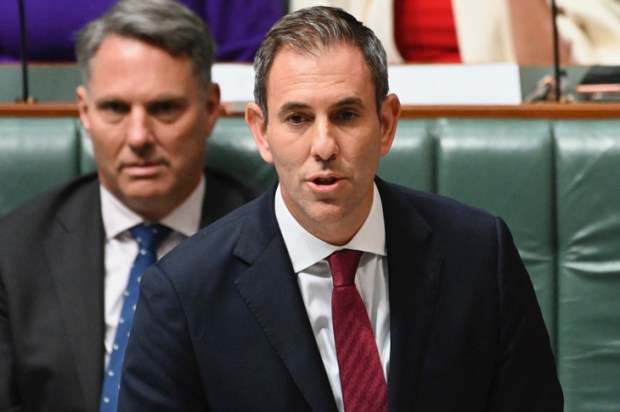Babysitting a couple of young teens recently, I sought to engage them over the evening meal, their main outing from their bedrooms after school. Having asked them over breakfast to come up with something about a friend or an event from school to talk about at dinner, I asked for their stories. The younger sibling piped up, no trouble; his older sister resisted, admonishing me when I pressed that it was an invasion of her privacy. After a silent dinner they both disappeared for the night.
Big fail but not atypical. By many measures, Gen Z, born 1997-2012, and the first generation of digital natives, are different, and often not in a good way. Teen mental illness is surging across the West, especially among girls; we are a decade into what eminent US social researcher Jonathan Haidt calls the largest epidemic of teen mental illness on record. The latest CDC study shows one in three teenage girls seriously considered suicide in 2021.
Nearly 60 per cent of teen girls feel consistently sad and depressed. Antidepressant use is soaring; ‘it’s better than them cutting themselves, or worse,’ a friend with two Gen Z daughters explained. The trend reaches down: official data shows some 114,000 Aussie kids aged 5-11 were prescribed antidepressants in 2020-2021.
Gen Z are also less sexually active and more health conscious than previous generations, with lower levels of drinking, and more teetotallers. Workforce entry is proving problematic. Three in four US managers in a recent survey said Gen Z was the hardest to work with – unmotivated, easily offended, lacking in skills. They’re not desperate to get out of the house either, with only one in four US 16-year-olds having a driver’s licence in 2021 compared with nearly one in two in 1983. Teenage escape is online these days. James Dean-style risk-taking is no longer admired, with a ‘Monitoring the Future’ survey finding nearly half of teens in 1991 enjoyed taking risks, but by 2020 it was only one in three. The snowflake generation is deadly serious about staying safe.
Harvard youth pollster and author of a book on Gen Z, John Della Volpe, says protection of basic rights is the key to Gen Z’s mindset: ‘clean air, clean water, to feel safe in school, reproductive rights’. And they were specifically concerned about LGBTQ members, whom they saw as vulnerable.
To an older eye, the trans debate can seem marginal, risible even – by and large we are not in any doubt about what a woman is. But it would be a mistake to underestimate how important it is to a fragile generation struggling to fit in.
Gen Z empathy with the LGBTQ+ agenda is extraordinarily high. A CDC study last week found that one in four US high schoolers identified as LGBTQ+. UK research found 62 per cent of Gen Z agreed that ‘trans men are men, trans women are women’, compared with the average of 46 per cent. Nearly half of all Gen Z respondents said they knew someone transgender. Oddly enough, the trans community at large seem over-represented in the US military. UCLA research from 2014 estimates that transgender individuals are twice as likely as all US adults to have served in the armed forces. Around one-third of trans people assigned male at birth served in the military and some 6 per cent of those assigned female at birth.
This stew of forces has bred an extraordinary militancy in the transgender movement. Disagreement is seen as trans genocide. Aggression is framed, paradoxically, as protection of the vulnerable, as Posie Parker found out when confronted by an angry New Zealand mob. Gun-bedecked tee-shirts bear slogans such as ‘Trans Rights…Or Else’; a group called Rainbow Reload is arming LGBTQ+ folk, and an unfortunate number of serial killers such as the Nashville shooter Audrey Hale, whose writings have so far been suppressed, are young trans people. The notion that words are violence is of course ludicrous, but to a generation anchored by screens and devoid of much real-life experience, it can seem true. Even putting the research-based view that trans identity is a social contagion can now be denounced as hate speech. Gen Z are not keen to give others the rights and sensitivities they demand for themselves.
Hale is an extreme case, and plenty of Gen Z teens are growing up sane and happy and ready to live a productive life. But many Gen Z members themselves, when asked in multiple studies, don’t say they are OK. They say social media is harming their generation, specifically with loneliness, bullying, body image, sleep patterns, fear of missing out, and overall anxiety.
One clue to repairing this misery epidemic lies in the work of Haidt, who has incited a lively academic debate by blaming much of it on the arrival of social media, beginning in 2012. He also cites over-protective parenting and loss of free play, which robs kids of their resilience and sense of agency.
This lifelong Manhattan liberal also argues that flawed thinking patterns, which he says were embraced by leftists more than conservatives, were to blame. These include catastrophising (‘we’ll all be rooned’), black-and-white thinking (people are good or evil), emotional reasoning (facts are unnecessary, my feelings are truth), and the idea that youth were fragile and could be harmed by the ‘violence’ of words, books and ideas. ‘Thinking in these ways causes depression, as well as being a symptom of depression,’ says Haidt. The glass is always half empty if you’re already sad.
Given our schools’ emphasis on catastrophic climate change and the irredeemably oppressive, unequal, racist and bigoted character of our Judeo-Christian civilisation and history, our schools are arguably generating a depressogenic environment, making our kids confused, lost and fragile. The utopian fantasies of the left, that reality and biology itself are infinitely malleable and improvable, are taking a toll on kids too young and unformed to know any better. We know it’s not reality; they don’t. The latest pronoun nonsense is gender neutral ‘voidself’ pronouns, such as ‘I met void today’.
Obliterating any identity at all is one way to navigate the treacherous teen waters of today’s schoolrooms and chat groups, albeit highly defensive and passive. Haidt offers two solutions. He wants teens kept from social media until 18, and wants schools and colleges to abandon distorted ‘harmful, depressogenic cognitive distortions’ such as diversity training, and the idea that words are violence.
Life’s hard lessons may yet teach Gen Z reality and resilience, but if they cling to the safety of their bedrooms and seek to avoid challenges, a painful road ahead awaits.
Got something to add? Join the discussion and comment below.
You might disagree with half of it, but you’ll enjoy reading all of it. Try your first month for free, then just $2 a week for the remainder of your first year.













